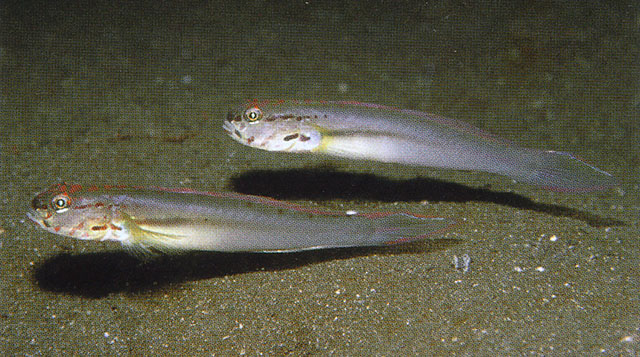| Gobiidae (Gobies), subfamily: Gobiinae |
| 8.5 cm SL (male/unsexed) |
|
reef-associated; marine; depth range 2 - 15 m |
| Western Pacific: Papua New Guinea. |
|
Dorsal spines (total): 6-7; Dorsal soft rays (total): 14-15; Anal spines: 1-1; Anal soft rays: 16-16. Characterized by dull brownish to blue grey body color with distinctive dark spots on snout; presence of row of brownish streaks or spots behind eye; pair of brown streaks on gill cover and pectoral fin base; first and second dorsal fin equal in height; lanceolate caudal fin; longitudinal scale series 65-75; fully scaled predorsal region; scales dorsally on opercle, absent on cheek; ctenoid scales on body; cycloid scales on nape, abdomen, and opercle; depth of body 5.0-5.4 in SL (Ref. 90102). |
| Usually paired (Ref. 90102). Inhabits silty sand of shallow protected inner reefs and intertidal flats near mangroves (Ref. 37816). Also occurs on muddy substrates to about 10 meters depth (Ref. 48637). |
|
Least Concern (LC); Date assessed: 27 August 2020 Ref. (130435)
|
| harmless |
Source and more info: www.fishbase.org. For personal, classroom, and other internal use only. Not for publication.

